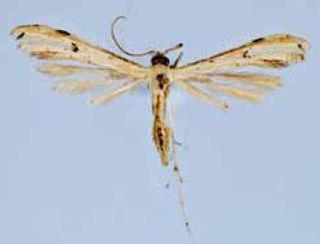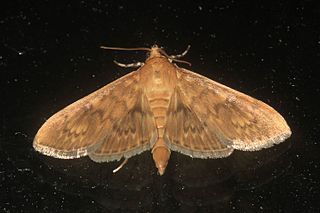
The Greater Antilles is a grouping of the larger islands in the Caribbean Sea, including Cuba, Hispaniola, Puerto Rico, Jamaica, Navassa Island, and the Cayman Islands. Six island states share the region of the Greater Antilles, with Haiti and the Dominican Republic sharing the island of Hispaniola. Together with the Lesser Antilles, they make up the Antilles, which along with the Lucayan Archipelago, form the West Indies.

Coccoloba uvifera is a species of tree and flowering plant in the buckwheat family, Polygonaceae, that is native to coastal beaches throughout tropical America and the Caribbean, including central & southern Florida, the Bahamas, the Greater and Lesser Antilles, and Bermuda. Common names include seagrape and baygrape.

Battus polydamas, also known as the gold rim swallowtail, the Polydamas swallowtail or the tailless swallowtail, is a species of butterfly in the family Papilionidae. The species was first described by Carl Linnaeus in his 10th edition of Systema Naturae, published in 1758.

Cosmopterix interfracta is a moth of the family Cosmopterigidae. It is known from Brazil, Cuba, the Dominican Republic, Jamaica and Puerto Rico.

Adaina ipomoeae is a moth of the family Pterophoridae. It is found in Cuba, Jamaica, Puerto Rico, Guadeloupe, the Dominican Republic, Grenada, and Florida.

Papilio pelaus, the prickly ash swallowtail, is a species of Neotropical swallowtail butterfly from the genus Papilio that is found in Jamaica, Hispaniola, Cuba and Puerto Rico.
Ethmia subsimilis is a moth in the family Depressariidae. It is found in Jamaica and Cuba and has also been recorded from Florida in the United States.
Ethmia kirbyi is a moth in the family Depressariidae. It is found in Haiti and Puerto Rico.
Ethmia abraxasella is a moth in the family Depressariidae. It is found in Jamaica, Haiti, the Dominican Republic, Puerto Rico, Cuba and the Bahamas. It has also been recorded from southern Florida in the United States.

Ethmia scythropa is a moth in the family Depressariidae. It is widespread in the Neotropics, from eastern Mexico, Honduras and Guatemala to Costa Rica, as well as on Cuba and Jamaica.
Ethmia submissa is a moth in the family Depressariidae. It is found in Cuba, Jamaica and Puerto Rico. It has also been recorded from southern Florida in the United States.
Ethmia notatella is a moth in the family Depressariidae. It is found in the Florida Keys, the Bahamas, Hispaniola, Puerto Rico and the Lesser Antilles (Curacao).
Ethmia cubensis is a moth in the family Depressariidae. It is found in Cuba and Jamaica.
Ethmia confusella is a moth in the family Depressariidae. It is found from the Florida Keys and Bahamas, through the Greater Antilles to the Yucatan Peninsula, and through the Lesser Antilles to Trinidad.

Asterocampa idyja, the cream-banded emperor, is a species of butterfly in the family Nymphalidae.
Eublemma recta, the straight-lined seed moth, is a moth of the family Erebidae. The species was first described by Achille Guenée in 1852. It is found in the United States from South Carolina to Florida and west to Texas. It is also found south to Argentina, on Cuba, Jamaica and Puerto Rico.

Schacontia themis is a moth of the family Crambidae described by Maria Alma Solis and Paul Z. Goldstein in 2013. It is found on the Cayman Islands and in Brazil, Costa Rica, Cuba, the Dominican Republic, Florida, Jamaica, Mexico, Panama, Puerto Rico and Venezuela.
Diaphania elegans is a moth in the family Crambidae. It was described by Heinrich Benno Möschler in 1890. It is found in Puerto Rico, Hispaniola, Jamaica, Cuba, Costa Rica, Panama, Guatemala, Honduras, Mexico and southern Texas. It is also found in South America, where it has been recorded from Venezuela, Trinidad, Ecuador, Peru, Brazil, Paraguay and Argentina.
Neoleucinodes prophetica, the potato tree borer, is a moth in the family Crambidae. It was described by Harrison Gray Dyar Jr. in 1914. It is found in Puerto Rico, Cuba, Jamaica, the Dominican Republic, Guatemala, Costa Rica, Panama, Honduras, Peru, Venezuela, Colombia, Trinidad and Tobago and Brazil. It is also present in southern Florida.

Psara dryalis is a species of moth in the family Crambidae. It was described by Francis Walker in 1859. It is found in the Dominican Republic, Puerto Rico, Jamaica, Cuba and from the south-western United States to Central America.








